–
City 40, or what is today known as Ozersk, is a closed city in Russia that the Soviet Union created during the Cold War. City 40 didn’t appear on any maps until 1991, allowed no outsiders to enter, and for a long time, no insiders were allowed out. It wasn’t until very recently that the Western world has even become aware of Ozersk, and it took a brave documentary crew sneaking cameras through the heavily guarded gates for any footage of the city to escape.
That footage shows Ozersk as the heart of the Russian nuclear program and its residents as the people charged with keeping that heart beating. The denizens of the cloistered city were treated to luxuries that the rest of the country was denied but also exposed to dangers that others were not. While there is (and will always be) much that outsiders will never know about what happens inside those gates, here is what we do know about the surreal, dangerous, closed-off world of City 40.
It’s The Home Of The Soviet Nuclear Program
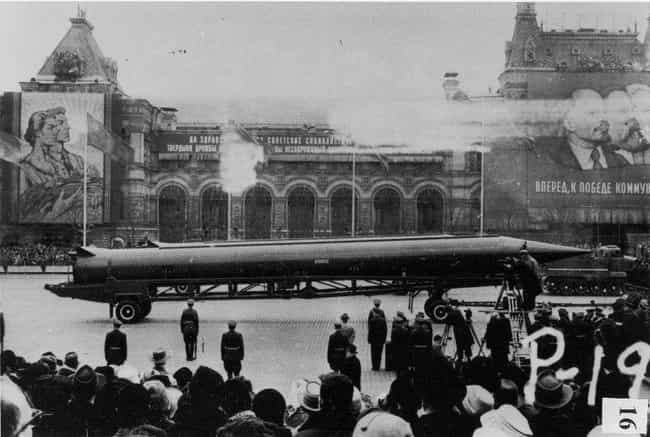
Construction on City 40 began in 1948 in a barely inhabited spot in the Ural mountains, about 45 miles from the city of Chelyabinsk (site of the 2013 meteor explosion). The city was built in conjunction with the new Mayak plutonium plant as a place to house the construction workers during the building process – and once the plant was up and running, the imported nuclear scientists and facility employees.
Mayak was conceived as the hub of the new Soviet atomic weapons program, a secluded place where state scientists could work furiously to catch up with the Americans. The plant quickly began processing and weaponizing plutonium, and their greatest success came with the manufacture of the infamous First Lightning, the USSR’s first plutonium bomb. Mayak is still in operation today but it no longer manufactures weapons; instead, it produces harmless commercial materials such as cobalt-60, iridium-192, and carbon-14.
It’s A Fully Functioning City
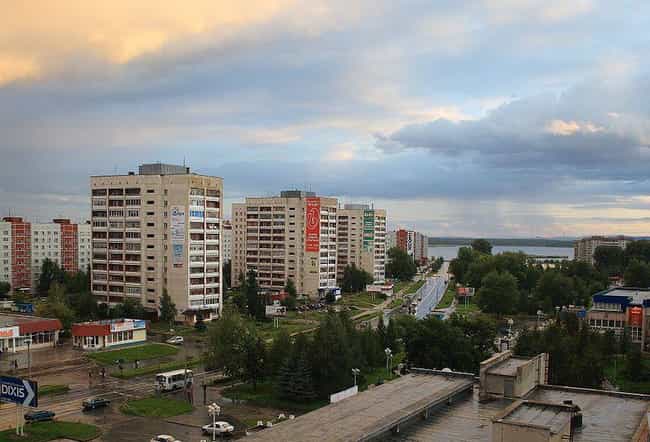
The plant itself requires about 15,000 people to operate, all living within the city walls. Those employees also have family members that live with them, and all of these people require an extensive infrastructure to house, feed, and care for them.
All told, there are nearly 100,000 people living in Ozersk, which has all of the features that you would expect from a city that size. There are sanitation and public works departments, post offices, churches, schools, restaurants, and grocery stores. The town even has its own Coat of Arms featuring a golden salamander.
You Can’t Get Inside. Period.
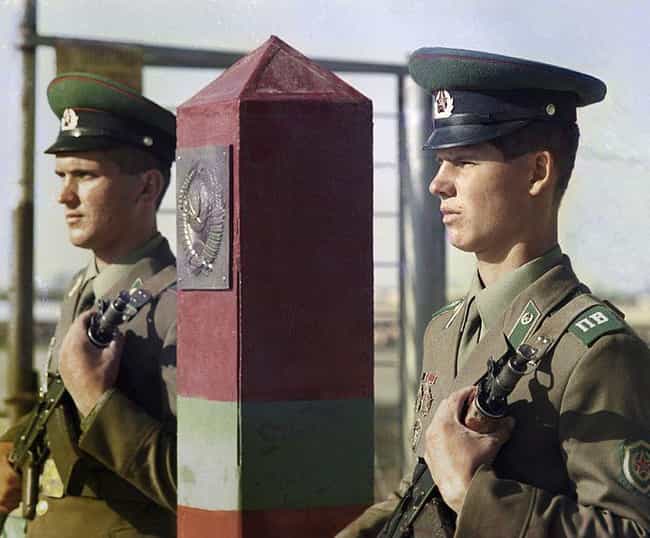
The city is surrounded by thick walls and guard fences, and no one is allowed in or out without the proper clearance – no outsiders admitted.
Today, residents are free to leave on their own, but this was not always the case: initially, no one other than the very highest-ranking Soviet officials were allowed to enter or exit the stronghold, with most residents essentially being held captive. Heavily armed guards stand at every gate.
The City Watches Everyone

It takes a lot of intense pressure and scrutiny to keep an entire city secret, and as such, the residents of Ozersk were (and still are) under constant surveillance. Visible cameras are everywhere – as are hidden cameras and audio recorders – and during the height of the Cold War, City 40 was crawling with Soviet secret police.
The NKVD and the KGB were constantly listening in on residents’ conversations to ensure that they weren’t sharing secrets or plotting anything illegal, and it was not uncommon for Black Marias to whisk residents away if anything suspect was detected. Citizens were tested by undercover agents who would ask them questions trying to get them to disclose classified information and then arrest them if they did.
The surveillance isn’t as extreme now, but it is still a closed city and the police presence hasn’t gone away – for example, some of the subjects of the City 40 documentary have faced police pressure and have been forced to flee the country for fear of imprisonment.
Residents Have Luxuries Other Cities Do Not
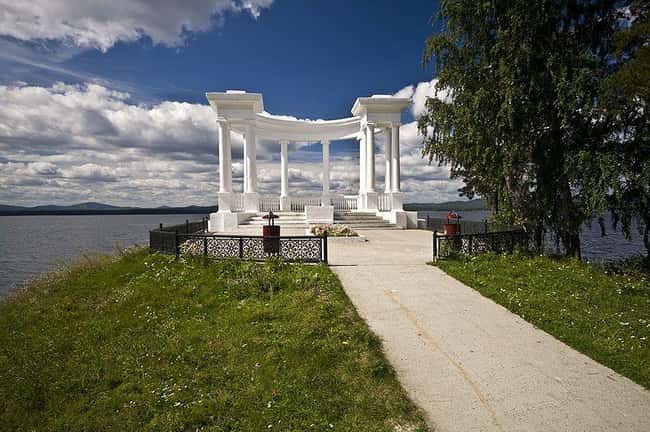
These days, residents of Ozersk are allowed to leave permanently if they so choose; however, most of them don’t, despite all the restrictions and shortcomings. The government has gone to great lengths to ensure that the city’s occupants are happy with their lives, doing their best to engineer a safe, clean, idyllic community surrounding their nuclear reactors.
The town is a surreally peaceful land of plenty with public parks, a professional theater, a college of music, fresh air, and beautiful lakes. There is little to no violent crime, plentiful housing, and the grocery stores are full of cheap, high-quality food that other Russian citizens didn’t used to have access to. In a time when bread was in short supply nationwide, Ozersk residents had access to luxury items like bananas, chocolates, and caviar.
The Whole City Is Radioactive
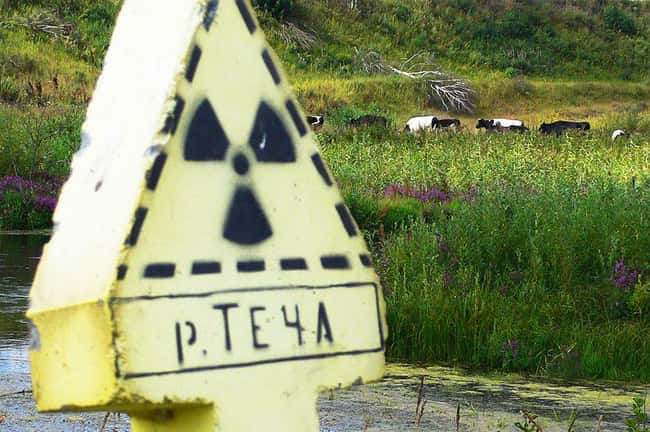
Yes, life in Ozersk looks picture-perfect from afar, but if history and literature have taught us anything, it’s that if things in Russia look too good to be true, they probably are. Sure, Lake Irtyash looks serene and picturesque, perfect for drinking, swimming, and fishing; however, the water has been shown to be amongst the most polluted in the entire world, leading to its charming local nickname: “The Lake of Death.”
Mayak used to dump their toxic waste directly into the lake and even though that practice has since stopped the area is already completely contaminated. The soil, plant life, wildlife, and even the air all bear more than trace levels of radioactivity, levels that can have some adverse health effects on its residents.
Radiation-Related Illness Is Seen As A Part Of Life
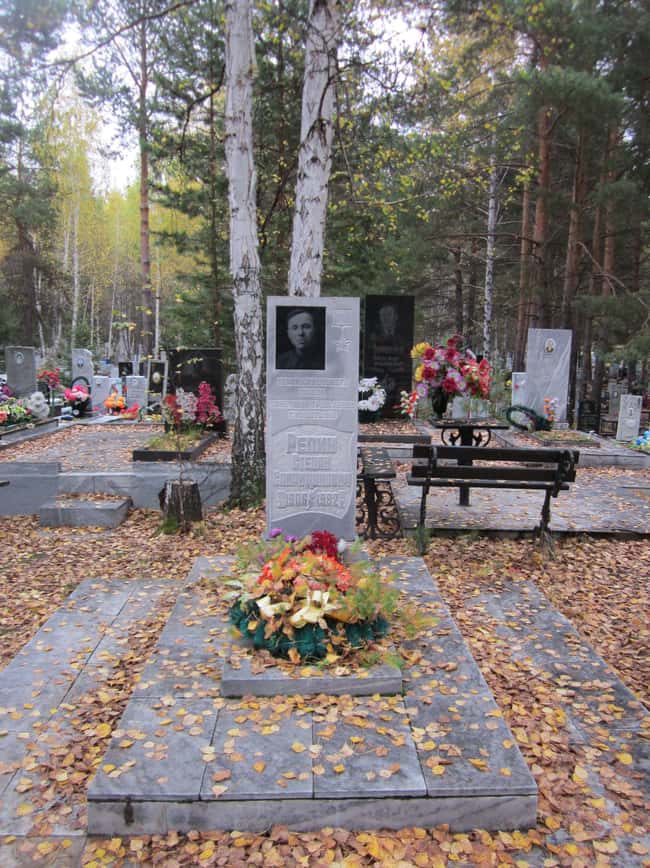
Radiation exposure is linked to cancer, birth defects, and a host of other ill health effects, and the people of City 40 have felt the brunt of those effects for years. Early statistics are hard to come by due to the government’s continued insistence against any elevated dangers despite all evidence to the contrary. Doctors were forbidden to mention that patients in the area had radiation poisoning; instead, it was called “special disease” and the infected patients were misdiagnosed, often without receiving the necessary treatments.
A recent study showed that Ozersk residents are more than twice as likely to develop lung, liver, and skeletal cancers and astronomically more likely to develop chronic radiation syndrome. Dying due to radiation-related illnesses has become so accepted by Ozersk residents that it’s come to be seen as a badge of honor; a sacrifice made for the good of the people.
It’s The Site Of The Third-Largest Nuclear Disaster In History
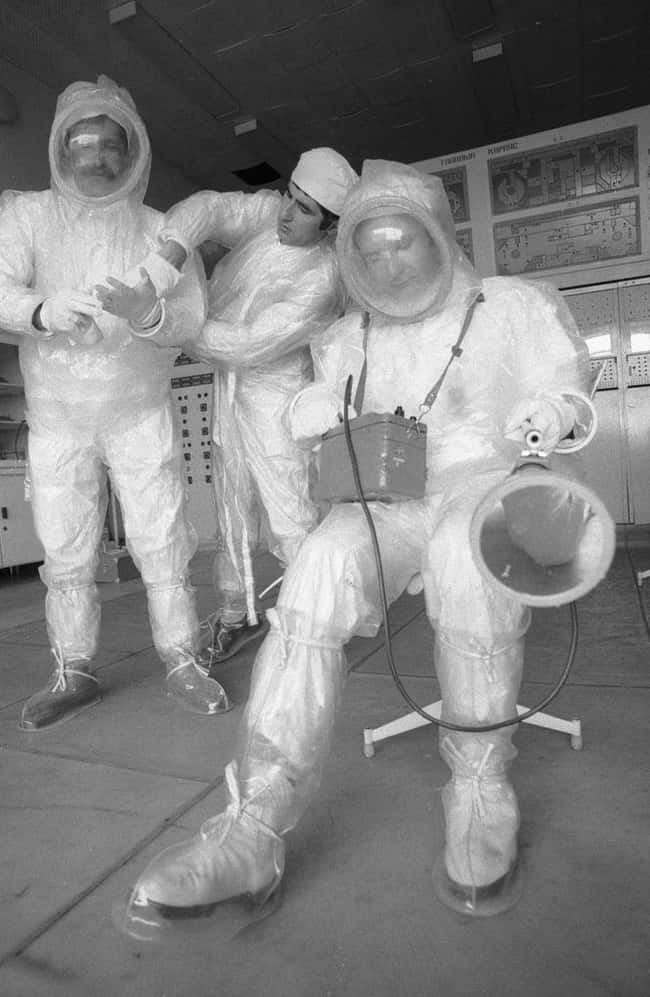
You probably know about the nuclear disasters that happened in Chernobyl and Fukushima, the two worst nuclear events ever recorded, and maybe even Three Mile Island (#5 on the list) or the Windscale Fires (#4). On the other hand, you may not have heard of the Kyshtym nuclear disaster, rated as the third-worst nuclear disaster in human history.
On September 29th, 1957, one of the cooling systems in Mayak failed. This led to one of the tanks that contained the plant’s nuclear waste overheating, and before anyone could do anything to stop it, the tank exploded. While there were no casualties from the blast itself, nearby farmers are said to have thought a nuclear war had started as the sky turned purple and a massive plume of toxic smoke billowed into the air. That cloud contained over 20 million curies of nuclear waste and was quickly picked up by the wind which began scattering the deadly debris around the surrounding region. Only 11,000 people were evacuated (despite the fact that approximately 270,000 lived in the affected area), and their homes were demolished and livestock destroyed without any explanation ever being offered. It’s called the Kyshtym disaster because that’s the nearest town that the Soviets would acknowledge.
The disaster was rated Level 6 on the International Nuclear Event Scale (INES), and within days, 300 of Kyshtym’s 5,000 residents had died of radiation poisoning. Accounts say that residents “grew hysterical with fear with the incidence of unknown ‘mysterious’ diseases breaking out. Victims were seen with skin ‘sloughing off’ their faces, hands and other exposed parts of their bodies.”
Thanks to extreme efforts by the Soviet government and the already secretive nature of the location, for a long time, no one outside of the Ozersk area was even aware that it happened. Rumors started circulating in the ’60s, but it wasn’t until renegade Soviet scientist Dr. Zhores Medvedev dissented and exposed the cover-up in 1976 that scientists started to grasp the extent of the disaster; an extent that we will never truly be able to measure.
‘The Most Polluted Place On The Planet’
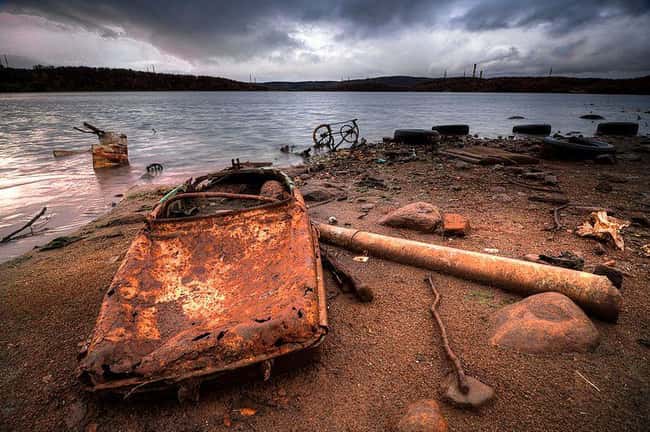
Near Lake Irtyash, or the “Lake of Death,” is Lake Karachay. Not only is Lake Karachay the most polluted lake in the area, but it’s also the most polluted place on the entire planet – so polluted that just standing on its shores for an hour would expose you to fatal radiation levels.
The lake is fed by the Techa river, the same river that Mayak dumped all of its waste in for years before anyone noticed. It took the Soviets until the early ’50s to decide that they shouldn’t pour toxic radioactive waste straight into the water that their people were drinking, so they started keeping it in massive cooling vats and then barreling it instead. It was one of these cooling vats, however, that exploded in the Kyshtim disaster, after which Mayak officials decided to dispose all radioactive waste into Lake Karachay directly. Levels of the radioactive isotopes strontium-90 and cesium-137 in the lake are estimated to have reached over 100 times the levels that were released in the Chernobyl disaster.
Nobody had any problem with this rampant degradation until a drought in 1967 lowered Lake Karachay’s water level so far that formerly submerged toxic sediment was exposed to the sun, drying it out and creating deadly radioactive dust. And then came the wind. The contaminated dust was picked up by a tornado or violent windstorm and scattered across the area, contaminating a 900-mile radius.
The government’s solution to this was to bury it all under cement. Ten thousand hollow concrete blocks were placed in the lake to keep the dangerous sediment from shifting. The top was then sealed and waterproofed, effectively ending the danger of another radioactive tornado striking the region… while also doing nothing to prevent contaminants from slowly seeping into the groundwater.
They Didn’t Get Their Own Name Until 1994
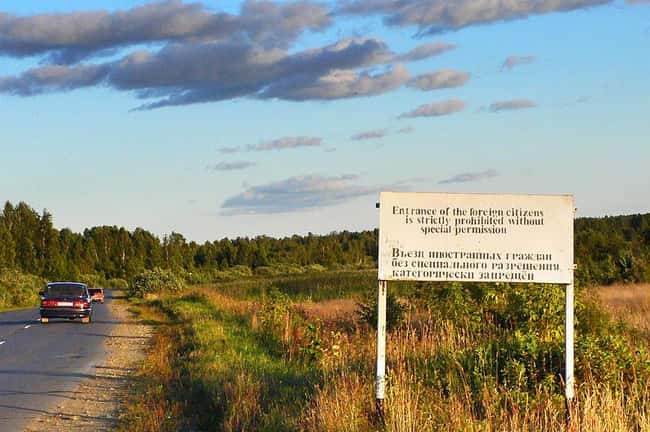
Ozersk is located in the Ural mountains somewhat near the much larger city of Chelyabinsk, so it was originally called Chelyabinsk-40 and then later Chelyabinsk-65 after the last two digits in the postal code. On the rare occasions that residents were allowed outside of the city, they were instructed to say that they were from Chelyabinsk and then, if pressed, that they lived on “Lenin Street” – one of the longest, most populated streets in the city. The city’s official code name was City 40 until post-Soviet dissolution civil rights leaders began petitioning for the area to get its own name.
In 1994, City 40 was officially re-christened “Озёрск,” which is Anglicized as either Ozersk or Ozyorsk. In addition to their name, the government officially added Ozersk to the Russian maps and finally legally acknowledged the existence of the city and its residents.
The Residents Are In Legal Limbo
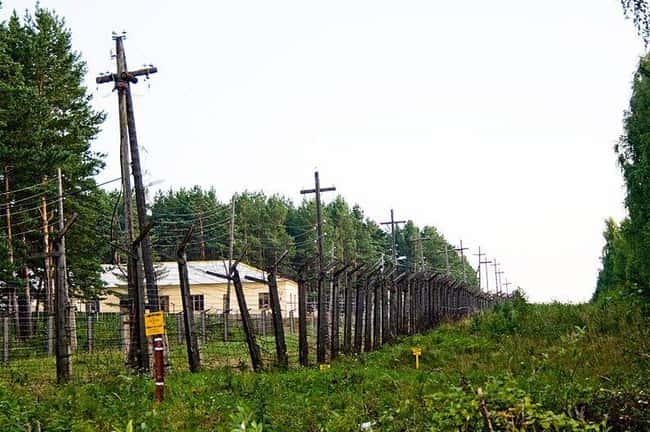
Being acknowledged by the government was a major milestone for the city’s residents because now they could get official birth certificates and other legal paperwork. They found themselves eligible for many government programs and benefits the first time, including compensation for their injuries and illnesses sustained on the state’s behalf.
The massive shift in legal status, however, has created a bureaucratic nightmare that residents, especially those born before 1994 (which is most of them) are still fighting through to this day. Many residents are denied – or are kept eternally waiting for – benefits that they need and are entitled to.
The City Is Still Loaded With Nukes
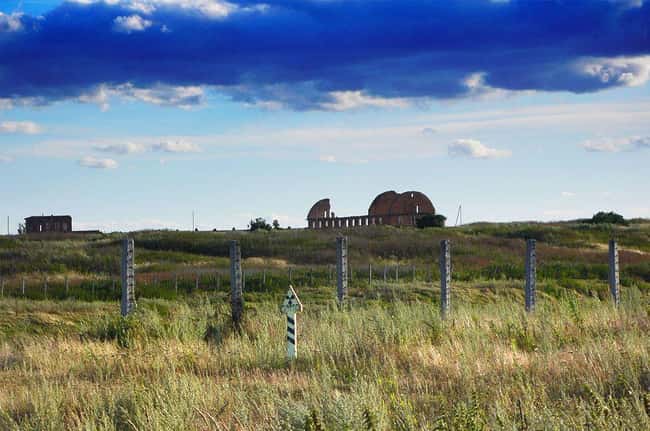
Current Russian President Vladimir Putin described Russia’s nuclear force as “more compact now, but also more efficient,” and what he meant by compact was “compacted in Ozersk.” While Russia’s focus these days has shifted from plutonium processing to the production of materials for medical and aerospace equipment, Ozersk is still home to the vast majority of the Russian nuclear stockpile.
Some of that stockpile is in the process of being decommissioned, but the rest of it is just in the process of being a bunch of deadly, decaying nuclear weapons. “We should always be ready to repel any aggression,” said Putin in the same speech, indicating that he has no plans to walk away from Mayak’s nuclear past anytime soon.
They Got The Idea From The US

Stalin’s spies intercepted the plans for the Hanford nuclear plant to be built in Richland, Washington, making him aware that Russia was falling far behind in the arms race. To catch up, Russia created a similar government-constructed town surrounding a nuclear weapons plant. This town became Ozersk.
Richland and Ozersk were hastily constructed sister-cities with a strange shared history. More secret cities existed throughout the Cold War on both sides, with some sites still functional today. Part of the Nevada National Security Site managed and run by the US Department of Energy, Mercury, Nevada, continues to be a US city closed to the general public.
Something Resembling An Alien Was Found Outside The City
–
While there is and always will be much about the city that we do not know, it is most assuredly a real place with an unfortunate history. And like most cities, it has its own share of urban lore.
One such story claims that in 1996, an elderly woman named Tamara Vasilieuna was out walking when she heard a series of strange cries coming from some bushes near the road. She investigated and discovered a small, humanoid life form in the foliage with a disproportionately large head, wide eyes, and a small hole that it seemed to breathe and cry from. Vasilieuna, who was reportedly a bit unstable before this incident, decided to take the strange being home with her and began treating it as though it was her own child, referring to it by some derivation of Alyoshenka, Aleshenka, or Alionshenka.
When the creature was examined by friends and later city officials, it was described as “a cat wrapped up in rags” and “not of this world.” Whatever it was, it perished when Tamara was detained against her will (though it is not clear what for) and officials refused to look in on her apartment, assuming that her claims of a baby inside were unfounded. The mummified body of Alyoshenka was later discovered by her family members and sent for autopsy to a morbid anatomist named Sanislav Samoshkin. Dr. Samoshkin was perplexed by the being, especially its oblong, onion-sized head, and it was he who first theorized that it was an extraterrestrial being.
Directly after Samoshkin’s autopsy, however, the remains were somehow either lost or stolen, making any further testing or corroboration impossible. The legend of the incident has grown over the years, and there are now quite a number of theories circulating about the origin of the body. Skeptics of the story believe that Alyoshenka was likely a premature (possibly deformed) infant that resembled stereotypical imagery of aliens.










